The movie opens with a deformed man staggering through the desert – the man will later be revealed to have been biological research scientist Eric Jacobs – who shortly perishes from what looks to be a genetic ailment called acromegaly, a rare disorder that is caused by an excess in growth hormone, but the real mystery here is that apparently four days ago, Jacobs looked completely normal, and the level of deformity he has at death would have taken years to reach the point at which the film finds him. That is all kinds of messed up.
What makes Tarantula stand out from other giant monster movies is that this film is primarily a mystery, with the hero trying to put together the pieces of a bizarre puzzle — it just so happens that this mystery ends with fighter jets attacking a giant spider. So not quite Agatha Christie, but still a cracking good way to wrap up a mystery. The man to solve this particular mystery is Dr. Matt Hastings (John Agar), a local country doctor who doesn’t buy “acromegaly” as the true culprit in the death of Jacobs, and he wants to investigate further. In opposition to this is Professor Gerald Deemer (Leo G. Carroll), who is not only a well reputed scientist, but was also Jacob’s scientific partner, and he puts the kibosh on the idea of having an autopsy performed, saying, “I don’t think that will be necessary. I was in attendance, and I signed the death certificate.” Worse is that Deemer’s entire explanation seems to hinge on the fact that, “Things happen when you get older.” Yeah, that sounds scientific.
“Or are you just covering up for medical malpractice?”
Hastings gets quite a bit of resistance from Sheriff Jack Andrews (Nestor Paiva), who takes the side of Professor Deemer, stating that, “A young fellow like you can’t stack what he knows against the Professor. The trouble is, Doc, you hate to admit you’re wrong.” As this story takes place in the 50s, and located in a small Arizona town, this attitude is actually quite realistic — "age trumps youth" was the motto of the 50s — as was the attitude towards women, when Stephanie “Steve” Clayton (Mara Corday) arrives in town – hired by the late Jacobs to work in their lab as a graduate student – one of the first things out of Dr. Hastings's mouth was this little gem: “I knew it would happen. Give women the vote and what do you get? Lady scientists.” The casual sexism was pretty much standard in films of that era, especially in the science fiction genre, but at least here Hastings is just kind of “kidding” around.“Doctor, you’re kind of cute, so I will let that boorish remark slide.”
What follows is your standard monster movie mystery, with a variety of horrifying moments to keep our interest peeked. Professor Deemer is attacked by another person – who seems to also be suffering from acromegaly – and who (during his trashing of the lab) injects the Professor with something, and we're betting it’s not kindness. The destruction of the lab does result in our title creature escaping into the night, though at this point the tarantula is no bigger than a large dog, but eventually it will grow big enough to feed on neighboring cattle, as well as the neighboring ranchers themselves. When Hastings discovers large pools of spider venom at the crime scenes – more venom than even hundreds of spiders could create – he becomes very suspicious, and when he learns of Deemer’s experiments in creating a super-nutrient, one that causes test animals to grow rapidly, he starts to put two and two together, that there be mad science at work.Two and two equals an eight legged nightmare.
The special effects for Tarantula as a whole are quite good – exempting the odd times when one of the tarantula’s legs would step outside the matte lines – but what is the real standout is the make-up effects that Bud Westmore developed for this film’s version of acromegaly, as they are purely terrifying. Poor Professor Deemer was injected with his “super nutrient,” and we get to watch in horror as over time his face and hands morph into grotesqueness. John Agar and Mara Corday have great screen chemistry, and their scenes together helps keep our interest between monster attacks, and Agar’s country doctor doesn’t even let a giant spider cockblock him, brushing off a monster induced rockslide as if it was nothing more than an annoyance. Mara “Call me Steve” is a spunky scientist who isn’t just around to be menaced and saved – though this does happen – for even though she’s only a graduate student, the film doesn’t treat her intelligence as anything less than that of our male hero.Question: Why do giant monsters insist on peeking through windows to check out women?
Then we have Leo G. Carroll who, though playing the standard movie scientist “Who should not meddle in God’s domain,” provides his character with a bit more pathos than what you’d expect to find in a movie about a giant arachnid tossing cars around and eating people. Overall, Tarantula is one of the best example of the 50s sci-fi monster movies, with good characters to root for and a monster that is universally feared. 'Cause seriously, who wouldn’t be afraid of a hundred-foot high spider? So if you haven’t seen this classic monster movie, I do recommend you hunting it down, before it hunts you.Final Thoughts:
• The film of course ignores Galileo's square-cube principle, as a creature exponentially grown to giant size would be crushed under its own weight.
• How Deemer plans to save mankind from starvation, by creating a super nutrient, is never made clear. All we see is his test animals that either become fully mature in a matter of hours, or grow gigantic. Not sure how injecting that into humans is all that helpful.
• The desert is a big place, but it’s still surprising how a hundred-foot tall spider manages to keep things on the down-low for so long.
• People would not be the prey of a creature the size we see here – a hundred-foot high spider tearing apart a house, looking for the human prey inside, would be like me busting up a dollhouse to find a couple of peanuts. Way too much effort for the end result.
• Nice uncredited cameo of Clint Eastwood as the lead fighter pilot who napalms the giant tarantula.
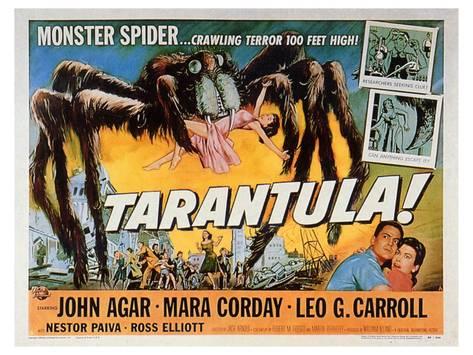
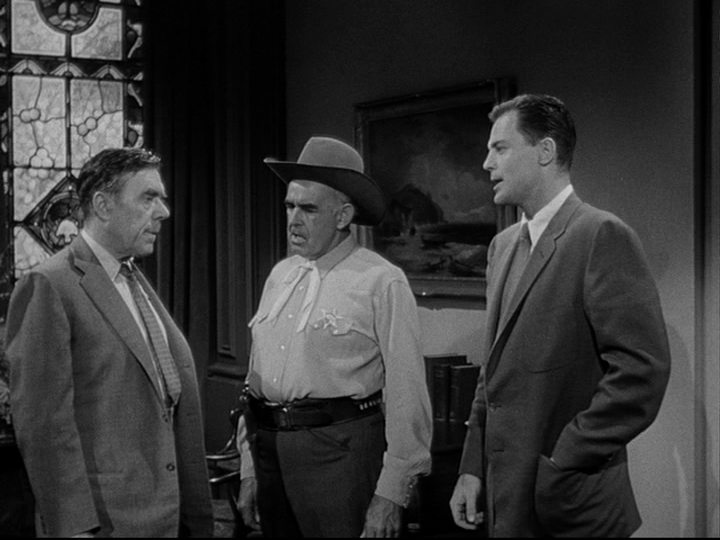
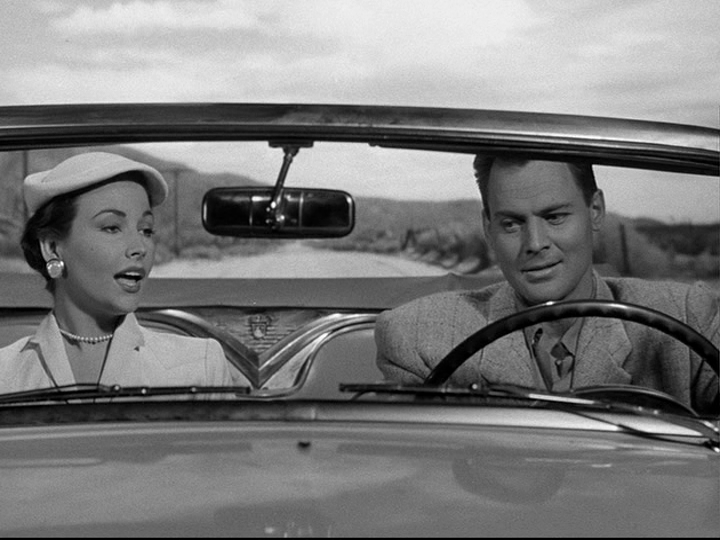
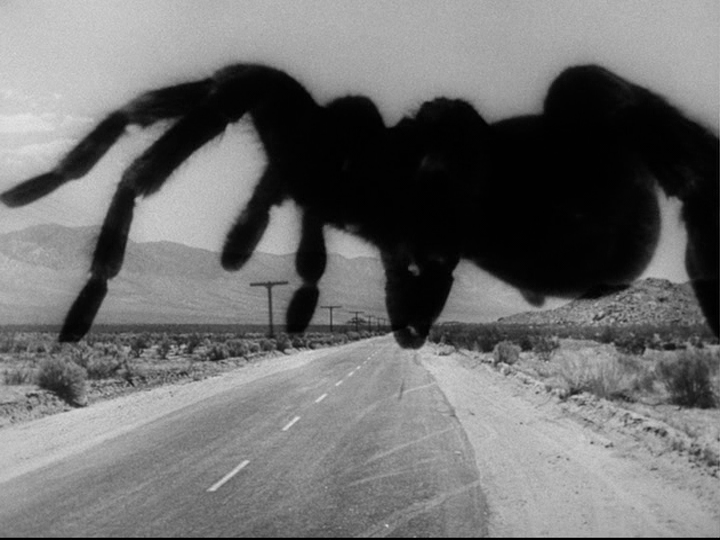
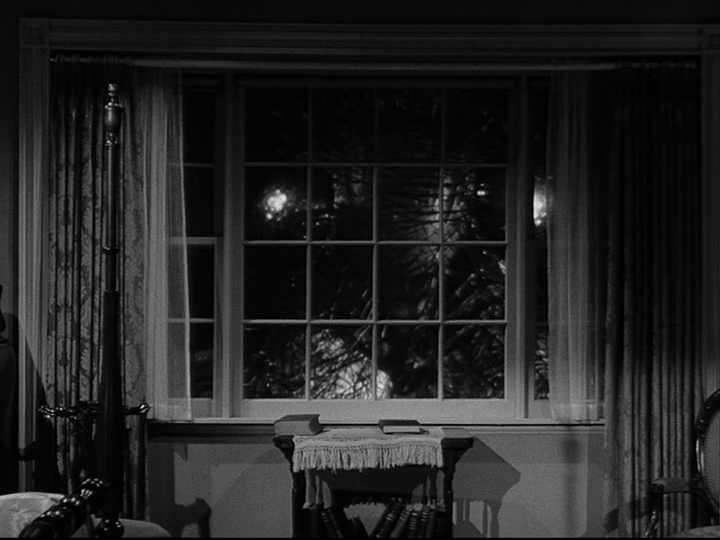


No comments:
Post a Comment